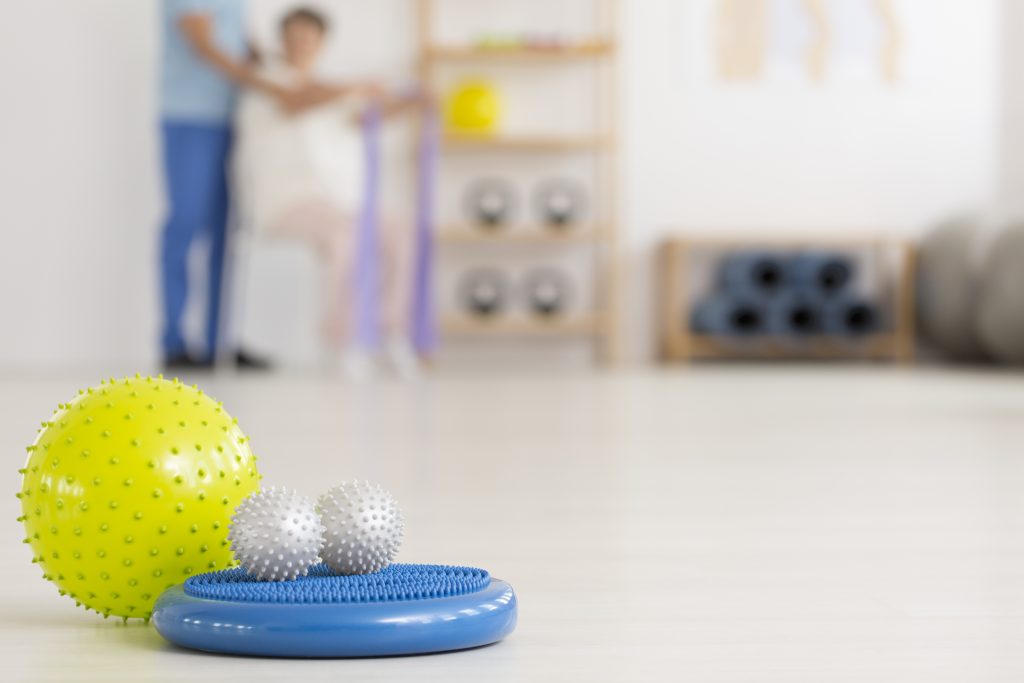There’s a prevailing thought in the fitness industry – particularly amongst personal trainers and coaches – that everyone we come across is somehow broken or dysfunctional, and that in order to make things “right” we have to resort to an onslaught of endless corrective exercise protocols before a barbell is even looked at.
You know:
- Band thingamajiggies.
- Endless mobility drills and stretching.
- Other stuff that makes me want to throw my face into an ax.
STOP IT!

Stop Corrective Exercising People to Death
Now, before I proceed let me be clear.
I am not downplaying the importance of “corrective exercise,” nor am I attempting to debunk the notion that it’s never useful or shouldn’t be prioritized. Sometimes more attention to detail with regards to one’s ability to access thoracic extension or, I don’t know, hip internal rotation, in order to accomplish a specific movement is warranted.
Sometimes people need “correcting.” (<— said in a creepy Mr. Grady voice from The Shining).
Whenever I start working with someone and they make note of how “x” exercise hurts “such and such,” rather than go down the corrective exercise rabbit hole and point out 27 different things that make them a walking, talking, breathing dumpster fire of dysfunction…
…I’ll do this novel thing, instead, where I ask him or her to perform the exercise and show me how they set-up and execute the movement.
Often, the culprit as to why something hurts or doesn’t feel quite right is the lowest hanging fruit like their setup and/or technique.
Let’s use the back squat as an example.
It’s not uncommon for many trainees to note how squats – barbell back squats in particular – tend to make their lower back feel like hot death.
Some fitness professionals like to keep things fashionable and will begin with an explanation that’s a bit more nefarious, if not altogether esoteric:
“Your lower back hurts when you squat because you lack big toe dorsiflexion, your left 4th rib is slightly rotated, and your chakras are all out of whack. See? Simple.”
It doesn’t have to be so complex.
First off: If this is how you talk to clients, you’re a tool.
Secondly: No one wants to listen to a laundry list of all the things that are wrong with them, and in doing so, does nothing but cement the idea that they’re broken and beyond repair.
Third: You’re a personal trainer not a physical therapist, act like one.
Fourth: Watch this video.
Those with a keener eye should be able to notice the difference between the two.
❌ TOP VIDEO
I initiate the descent by “falling” into my lower back.
In other words, rather than using the joints I want to perform the squat – ankles, knees, and hips – I recruit my lower back and use my spine for support as I descend towards the hole. Additionally, because I’m excessively arching my back (excessive anterior pelvic tilt) I’m increasing bone on bone contact as I go into deep(er) hip flexion, thus creating a more likely impingement scenario.
As a result, if you watch closely, I exhibit a bit of “butt wink” in the bottom because I’m running out of room in my hip.
As such my lower back HAS to come into play (even more) in order to go lower. To that end my back is basically saying “bye Felecia.”
✅ BOTTOM VIDEO
By contrast, in the bottom video, I create more tension in my abs (creating a flexion moment) so as not to fall into (more) anterior pelvic tilt on the descent, and I think about squatting DOWN rather than BACK.
I’m still in APT, but using posterior pelvic tilt to nudge myself closer to “neutral.”
In Short: I’m improve my STARTING POSITION, which in turn keeps me more stable, the squat cleans up nicely (I’m able to squat deeper because I have more room in my hips), and the butt wink is all but gone.
More to the point…my lower back no longer hurt.
No need for a laundry list of correctives, stretches, mobility drills, or an exorcism.
All that was needed was to address my starting point (set up) and to have a better appreciation of the importance of TENSION.
To quote Denzel from Training Day: “King Kong ain’t got shit on me!”



